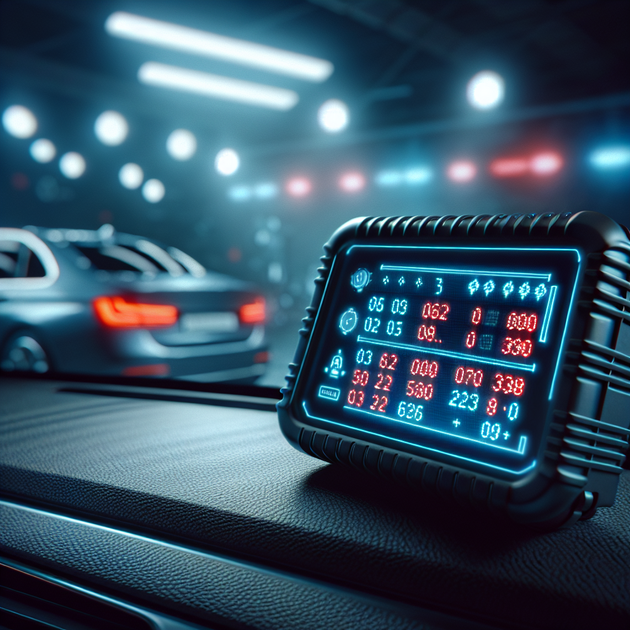Ever plug in a code reader and get stuck staring at a repetitive “1 1 2”? A lot of drivers have been there—stumped by numbers that just won’t quit. If you’re scratching your head and wondering what code this is (and why it keeps coming back), you’re definitely not alone.
Let’s break down the mystery of the “1 1 2” code and find out exactly what it means for your car—or if it even means anything at all.
When Your Scanner Reads “1 1 2”: What’s Actually Happening?
Getting a persistent or repeating code like “1 1 2” can be both frustrating and confusing. Most people expect their OBD-II scanner to spit out something like P0300 or P0420—standardized codes used across most vehicles since the mid-1990s. But sometimes these devices display numbers that don’t look like regular error codes at all.
So, what’s going on?
– Some older or off-brand scan tools use unique ways of showing information.
– The sequence might not actually be a fault code—it could be a communication signal or part of tool diagnostics.
– In rare cases with older cars (especially pre-OBD-II), manufacturers used two- or three-digit blink or flash codes.
But here’s the kicker: modern cars almost always use five-character OBD-II codes (like P0123). If you’re seeing something like “1 1 2,” there might be an issue with how your tool communicates with your car—or you might be looking at a tool-specific message rather than an actual problem with your engine or emissions system.
Common Reasons You See Weird Codes Like “1 1 2”
Here are some typical reasons why a scanner might display odd sequences instead of real diagnostic trouble codes:
- Outdated or incompatible scan tool: Newer cars require up-to-date readers; old ones may not work right.
- Manufacturer-specific communication: Some brands use their own systems before standardizing to OBD-II.
- User interface quirk: The device could be indicating mode changes or setup steps rather than errors.
- Malfunctioning scan tool: Low battery or internal faults can cause strange behavior.
- No faults detected: Some tools flash numbers (like single digits) as part of their normal operation when no real errors are present.
In most cases, if you’re getting a steady flashing sequence like “112,” especially with no check engine light on the dash, it likely doesn’t point to an actual engine fault.
How Real Diagnostic Codes Are Supposed to Look
Standard OBD-II trouble codes follow a specific format for easy identification:
- Pxxxx: Powertrain (engine/transmission) problems – e.g., P0300
- Bxxxx: Body system errors – e.g., B0028
- Cxxxx: Chassis issues – e.g., C0035
- Uxxxx: Network/communication faults – e.g., U0100
If you’re not seeing something like this but are instead getting repeating numbers, double-check:
– The year and make of your vehicle
– Your scan tool’s compatibility
– Whether you’re using the correct procedure for reading codes
For more details about how OBD-II works across different models and years, check out EPA’s guide to OBD regulations. This will help clear up which systems should produce which type of error messages.
An Anecdote from the Garage
A friend once bought an old handheld scanner from a yard sale to troubleshoot his ‘95 sedan. Every time he plugged it in, he got nothing but a blinking pattern—“112…112…112…”—with no other info. Turns out, his car was just on the edge of switching from manufacturer-specific flash codes to standard OBD-II. The scanner wasn’t compatible. When he borrowed a newer model from his neighbor, suddenly he saw proper trouble codes—and finally tracked down his misfire issue. Sometimes upgrading your scan tool is all it takes!
Troubleshooting Tips When Faced With Unusual Codes
If you keep seeing unusual sequences instead of standard fault codes:
- Double-check your scanner’s manual for explanation of flashing patterns.
- Confirm that your vehicle supports OBD-II if made after 1996 (in North America).
- If possible, try another scan tool—preferably one known to work on vehicles like yours.
- If using an older car (pre-1996), research whether it uses manufacturer-specific blink codes.
- If unsure about any dashboard lights or messages, consult NHTSA’s dashboard symbols guide.
- If all else fails and symptoms persist, ask for help from a professional mechanic—you’ll save time and money in the long run.
The Bottom Line on “What Code Is This?” Mysteries
Seeing something like “112” repeating on your scanner usually isn’t a sign of disaster—it’s often just confusion between different systems talking to each other. Double-checking compatibility and using up-to-date gear usually clears things up fast.
So next time you spot an unfamiliar pattern on your diagnostic tool screen, don’t panic! It might just mean your scan tool wants an upgrade—or that everything is running fine after all.
Ever had a weird code pop up on your reader? How did you figure out what it meant?

Leave a Reply